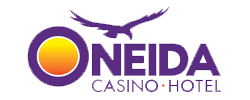WisDOT photo
Representatives from Wisconsin’s 11 First Nations, including Oneida Nation Councilwoman Marie Cornelius (formerly Summers), gathered with state DOT officials August 11 in Waubeno for the annual WisDOT-Tribal consultations.
Government Administrative Office
The Wisconsin Department of Transportation (WisDOT) and representatives from the state’s 11 tribes, including Oneida Nation Councilwoman Marie Cornelius (formerly Summers), gathered August 11 at Potawatomi Carter Casino in Wabeno for their yearly consultation. The purpose of the annual meeting is to share information and work toward transportation solutions that impact everybody’s safety and quality of life. Councilwoman Cornelius’ participation in the meeting pertains to the Oneida Business Committee’s (OBC) Broad Goals of Health and Safety.
The first topic attendees took up was to address concerns surrounding access to funding. Current access to transportation funding involves many bureaucratic steps the go through, apply for and ultimately be selected to receive the new infrastructure funding for sovereign Native tribes. “We were able to come to the table and express concerns pertaining to infrastructure funding,” Councilwoman Cornelius said. “All the Nations in attendance are looking for solutions to better access funding to service their respective communities. Funding delivery issues along with funding deficiencies are historically constant concerns.”
Proposed solutions to this issue started with developing a rapid funding program to streamline funding access. Other ideas included eliminating unnecessary steps in the funding process as well as increasing the number of transportation system infrastructure funding opportunities, which are set-asides, for tribes. “The Wisconsin system requires Nations to apply for grants which can be a lengthy process based on various requirements,” Cornelius said. “If an applying Nation gets one section incorrect, the entire grant request gets bumped back to them for correction which leads to a very long timeline.
“In many instances when we receive grants they are set to expire within a certain time period, so even though we may have submitted for it six months prior and receive it, we must take action and use it within that timeline otherwise we have to return it,” Cornelius continued. “It’s these kinds of scenarios that put undue pressure on Wisconsin’s tribal nations to turn their projects around in a very short time period when those timelines are tied to the grant.”
The next issue discussed was funding delivery concerns. Tribes are now requesting the delivery of funding through BIA programming instead of WIS-DOT administration of program funds. Ideas brought forward to accomplish this included having new funding be delivered directly to tribes through the BIA Tribal Transportation programs without WIS-DOT administration as an intermediary, which is typically required to access funds. Another proposed solution is to allow tribes the opportunity to leverage other existing funding sources to match and compliment new funding sources. Yet another addressed concerns that WIS-DOT gives preferences to local units of government, which have existing cooperative governance agreements in place when the local unit applies for funding through WIS-DOT.
Historic funding deficiencies was the next topic up for discussion which addressed sovereign Tribal Nations consistently being overlooked in FHA funding allocations. A possible solution is coming in the form of a ‘funding catch-up’ program. This will bring additional funding to tribes at levels commiserate with other comparable governmental divisions similar to states, counties, cities, towns, and village distributions based on tribal transportation needs, square mileage of the reservation, and community population served on the reservation.
Partnering with local governments was the final topic discussed. The Oneida Nation has cooperative governance agreements with multiple local units of government that have lands within the Oneida Nation Reservation. These agreements foster many discussions about creating opportunities for partnering on transportation infrastructure projects. The challenge is to apply collectively for complementary funding sources for local governments and tribes. Solutions offered included creating new joint-funding opportunities which would streamline the process for tribes and municipalities to apply for and receive funding for transportation systems within Indian Reservations. Another idea is to create new funding set-asides which only tribes will access when partnering with a municipality for roads on reservation lands. Giving additional funding consideration to projects in which a tribe partners with another municipality on improvements benefit both partners.
“It’s a great relationship when a Nation is able to partner with surrounding local governments,” Cornelius said. “It’s always productive when we’re able to find solutions together and have those agreements so we can all manage our expectations for any kind of funding that comes forward. We think set-aside grants for Indigenous Nations is a viable solution so the 11 tribes in the state can compete for grants earmarked solely for them. It’s great that we have cooperative government agreements because they build relationships and both sides are heard. Those agreements also help secure how tribes are treated when it comes to taking care of our community needs.”
To learn more about how Native Nations in the state partner and work with the WisDOT please visit Wisconsin Department of Transportation Tribal affairs (wisconsindot.gov).





